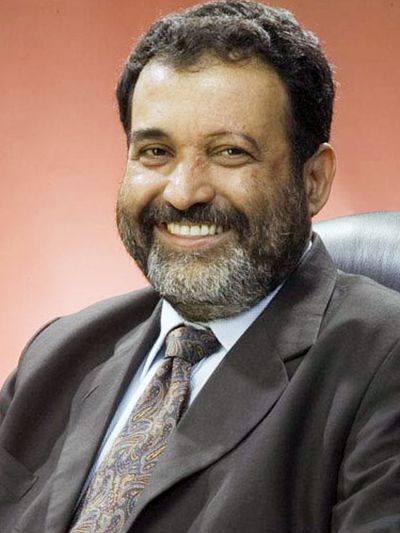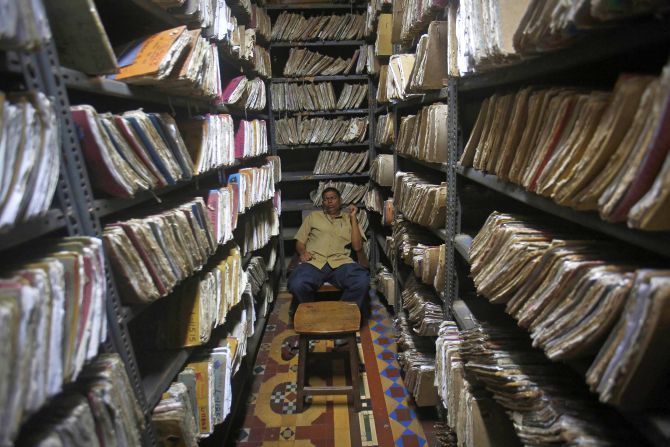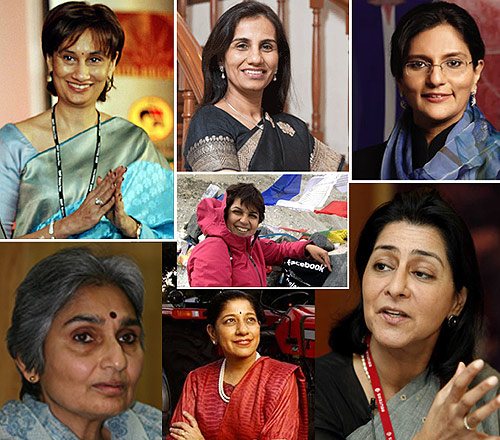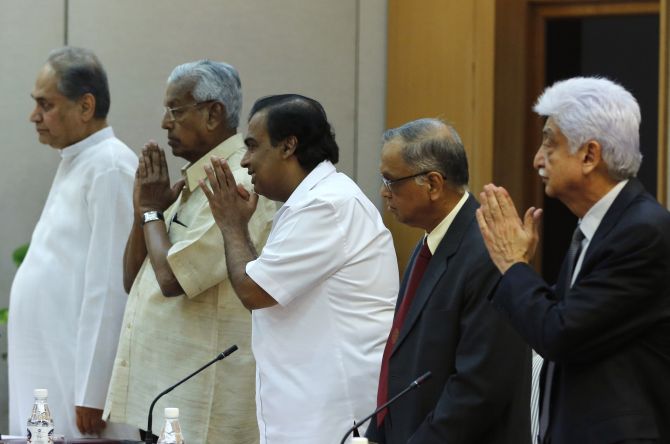Photographs: Reuters Sriram Balasubramanian
The majestic 14-floor building in Vikhroli (West), Mumbai, was a visual treat. As I made my way into the plush office, the creative grandeur was resplendent with a deft touch of Indian ethnicity everywhere.
The bright colours and unique conference room names added to its elegance. Being the product of an icon of new age entrepreneurial India, the company’s grandeur did not surprise me much.
“I started my business sometime in the mid 1980’s and my clothing business was a small scale one. Most of the clothing businesses were small-scale businesses and were restricted to small scales by law. As a result, people were not thinking big at that time” said Mr Kishore Biyani, the founder and CEO of the Future Group which has retail chains such as Big Bazaar amidst other brands.
Being one of the most prominent faces in the retail sector, Mr Biyani represents many things that new age India had metamorphosed into. His thoughts were direct, pointed and there was an air of confidence as he gestured with his left hand through the interaction.
One of the major obstacles to business houses in the 1980’s had been the issue with capital for new businesses and entrepreneurs.
The strict norms in the free flow of capital had often stifled that generation of looking beyond the boundaries of the country and scalability was often a taboo word. In fact, people did not even dare imagine having global operations spanning multiple continents.
…
How India's businesses have transformed
Photographs: Reuters
“Access to capital was my biggest challenge at that time,” says Ms Kiran Mazumdar Shaw, the CEO of Biocon, an Indian Biotech giant. She is a first generation entrepreneur and had started her venture in the late 1970’s.
At that time, access to foreign capital was non-existent and provision of domestic capital was restricted to the people who had the right connections and contacts. Even then, due to the closed nature of the economy, it was not possible to utilise the complete potential of India.
To put things in perspective, the capital inflows in the late 1980’s into India was about Rs 200 crores (Rs 2 billion) whereas in the first decade of the 21st century, it was almost 20 times more.
In addition, financial institutions such as public sector banks were very reluctant to provide capital unless you were very well connected with the establishment.
Ms Shaw adds: “Banks thought I was crazy to start a business when I was 25! After numerous tries, one manager from a public bank offered me initial funding options. It was a very difficult process to access capital in that era”.
This played a significant role in stifling innovation through the years especially for businesses that were looking for scale and were new to the markets. Besides entrepreneurial capital, infrastructure was also a point of concern.
…
How India's businesses have transformed
Photographs: Reuters
“Even for a publishing house such as ours, there was an infrastructure deficit in the retail book space” says Kapish Mehra, CEO of Rupa Publishers and one of the most influential people in the publishing world in India. His family has been running the business successfully for decades.
He adds: “There was no National Book Policy to govern the industry and the supply chain infrastructure support was weak at that time. Not much has changed even now in this regard”.
Besides the access to capital, another throwback to the 1980’s era has been the well talked- about License raj era regulatory approvals that were required to begin a business.
The regulatory approvals were tedious, it went through numerous people in the bureaucracy and it took a lot of time.
In an era where one had to wait for years to get a telephone connection, one can imagine how challenging it would have been to navigate the regulatory approvals in an honest, ethical and transparent manner.
This was illustrated in a very succinct manner by T.V. Mohandas Pai who held senior positions with Infosys for more than two decades and is one of the most prominent business voices today.
“It created a situation where business could prosper largely if they manage government and let to cronyism of the highest order. The government had favourites, people lobbied to keep out completion, produced shoddy goods and generally the consumer was ill treated” said T.V Mohandas Pai on the regulatory approvals in that era.
However, to my surprise, according to some business leaders things have not changed much now compared to those days in this regard.
…
How India's businesses have transformed
Photographs: Wikimedia Commons
Ms Shaw says: “I did everything myself at that time. In this regard, there are more regulatory controls today compared to before, though the time is shorter.”
Mr Biyani also seems to feel the same in this context as he mentions that “the scenario is not better now, there are more number of regulations that need to be cleared now”.
Though the business environment as a whole has become more transparent with the regulations, there is still a lot of red tape within the bureaucracy that delays approvals at various levels.
Even in today’s age, leave alone the 1980’s, it takes substantial time to get approvals done in an transparent manner.
One of the biggest off-shoots of the regulatory raj of the 1980’s was rampant bribery across the governments; a trend that most businessmen feel has evolved.
In the 1980’s, since files need to be passed through numerous people, the opportunities for corruption were immense.
Since the state had control over almost everything, transparency was less and the Indian government officers were very powerful people.
As such at that time, work could get accelerated but there was an ethical compromise businesses had to make especially when they wanted to grow rapidly. However, it also depended on how ethical businesses leaders were.
…
How India's businesses have transformed
Photographs: Reuters
An example would be Ms Shaw who states, “I was upfront with my moral policies and I was willing to wait. Even today, only if you need “speed money” bribery in the form of money gets into place. I might lose business in the short term but I am willing to do that as I place my values on priority first.”
Mr Biyani, on the other hand, feels that things have improved much more in today’s India compared to before.
He says “ I think this has decreased substantially over time across large businesses. However, it also depends on the image you build for the company; a clean image can be a deterrent for people for asking money.”
The image is a very important aspect in doing business in India. Companies with established business practices and ethics built within the organisation are treated rarely with contempt by government officials.
The brand image serves as a buffer in today’s India in thwarting bribes towards established business houses.
Besides these structural issues, one of the starkest changes in the 1980’s was the nascent presence of technology across businesses. In an era where cell phones and laptops were non existent and when the most high tech gadget was a telephone, the dynamics of doing business was completely different and would seem so “stone-age like” now.
To put things in perspective, Ms Shaw adds that “entrepreneurship was considered a post retirement activity”. Job security was probably the single most important thing during that time.
…
How India's businesses have transformed
Photographs: Reuters
The lack of technological change and the socialistic environment created a comfort zone, which did not allow the people to explore more in their lives.
As Mr Biyani eloquently put it “Those days we could get away with mistakes, skills are more needed now since the market is more competitive and the opportunity cost of errors is high”.
Mr Mehra also agrees with this point and adds “the competition and the dynamics of the market have changed now compared to the 1980’s” In addition to this, gender equality in the corporate world was also a point of concern at that time.
The number of women business leaders was marginal in the 1980’s. In 2013, there are at least a dozen Indian women business leaders in the Top 50 business leaders in Asia rankings by a leading international business magazine.
In the 1980’s era, according to Mr Pai, “women leaders and entrepreneurs barely existed”. The social barriers for business women were significant and none could reflect upon it better than Ms Shaw.
She says “No women had ever done what I had done then. It added even more to the negative approach that people had towards me and my enterprising ideas.”
…
How India's businesses have transformed
Image: India Inc's women leaders.As I interact with her, she recounts how difficult it was for her to even recruit people for her company because she was a women and how she had to slog to even hiring people in the early days of setting up Biocon.
Needless to say, the environment has become much more plural now in the 21st century and women in corporate positions have increased significantly.
Mr Biyani says unequivocally “I find a lot more women in the corporate world today and in significant positions. This is particularly seen in the banking sector where women occupy some of the top posts, there is progress across businesses.”
Even in the publishing industry, according to Mr Mehra, “there have been numerous women who are in executive roles than editorial roles. The distinction between men and women at the workplace is almost not there.”
The cumulative effect of all the factors mentioned above has been a transformation in the culture of entrepreneurship in the country post the 1980’s.
Almost all of the business leaders agree that entrepreneurship has evolved into a socio cultural concept that even has penetrated into middle class homes that used to be content with security in jobs.
…
How India's businesses have transformed
Image: Rupa Publications Managing Director Kapish Mehra at the launch of Chetan Bhagat's first non-fiction book What Young India Wants.Photographs: Rupa Publications
Ms Shaw says “There are a large number of entrepreneurs who are young and the concept is accepted across society. In addition, the attitude of the society has changed over time and this has benefited entrepreneurs immensely.”
Mr Pai seems to suggest that today’s India’s “ecosystem is developing and we are midday towards a robust ecosystem”.
While most people have accepted this view, one of the distinctions that people has been the enormous market related uncertainties that have dragged the entrepreneurial culture down.
A point that has been often emphasised has been a reduction in capital and Mr Biyani says “Entrepreneurship was thriving at that time and there was a positive environment all around. Besides that decade, I don’t see major changes in this compared to the 1980’s”.
The vacuum that has been left for the past few years need to be fixed and there needs to be a reboot in the system to drive the entrepreneurial culture ahead.
Even though the License raj era had a negative impact on most businesses, in some industries the impact was much lesser.
“In the case of the publishing industry, there were both positives and negatives. In the early 1990’s, we could sub license books and had a robust export market. After liberalisation, there were other benefits that helped us expand” says Mr Mehra.
He adds “ The turning point of the industry was in 2000 which was a watershed moment. The arrival of authors such as Chetan Baghat created a whole new market and opportunities for new authors”.
…
How India's businesses have transformed
Photographs: Reuters
In some industries such as publishing, the impact of liberalisation was far less. In fact, in such industries, it did not really make a big difference due to the uniqueness of some industries.
While all these factors reflect upon how India has evolved over the years, there are some things, which withstand the test of time.
As I interacted with various business leaders on the subject, they couldn’t hide the yearn for heading back to the 1980’s for some time. The lifestyle, according to most of them, was much more pleasant, calmer and holistic beyond the business world.
Though they had to confront numerous obstacles while doing business in the country, they somehow seemed to suggest that there was more happiness during those times.
The happiness was primarily credited to a more relaxed and holistic lifestyle. This could be also because of a sense of personal nostalgia that they always cherish and would always prefer, to the rat race of the 21st century.
As I contemplate on some of the challenges that the business leaders, I also talk to them about one thing that they would like to see that would assist businesses in the years to come. The unanimous chorus seems to be “Leadership”.
Mr Biyani says “India has everything that is needed to thrive. As we get into this decade, we need decisive leadership to take India ahead”.
This was resonating in every discussion I had with business leaders, if not, as most of them agreed, there is a chance we might go back in time and lose a golden opportunity in history. The hope, however, is that India would produce such leaders so as to drive us ahead in the 21st century.
Sriram Balasubramanian is a writer and journalist. He could be contacted @Sriram316 and on his website www.srirambala.in










article